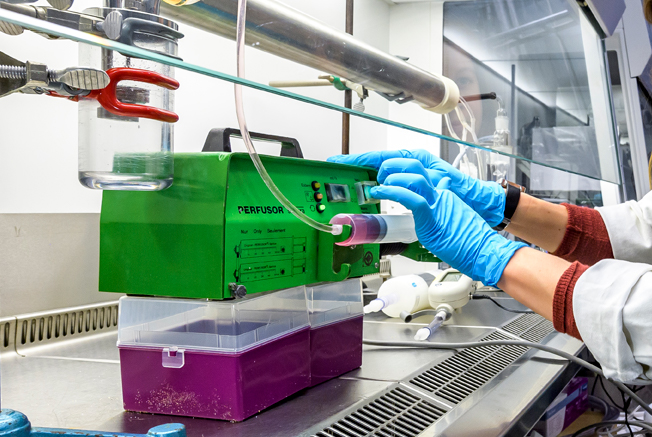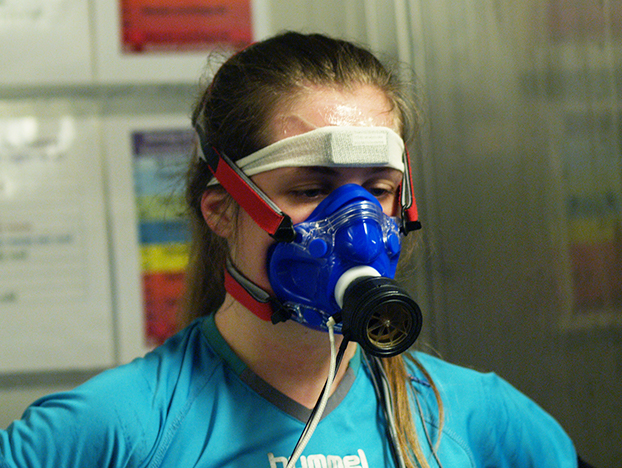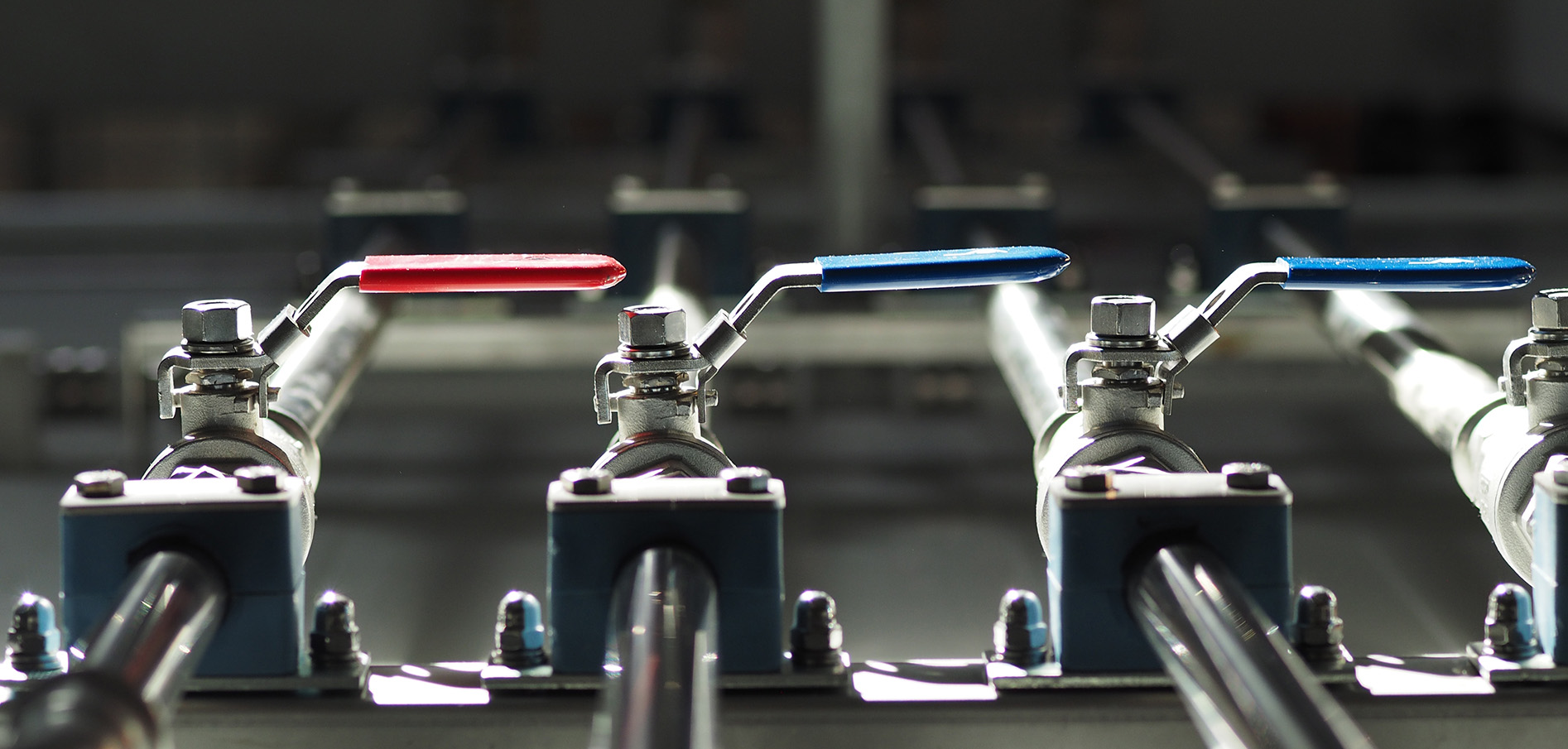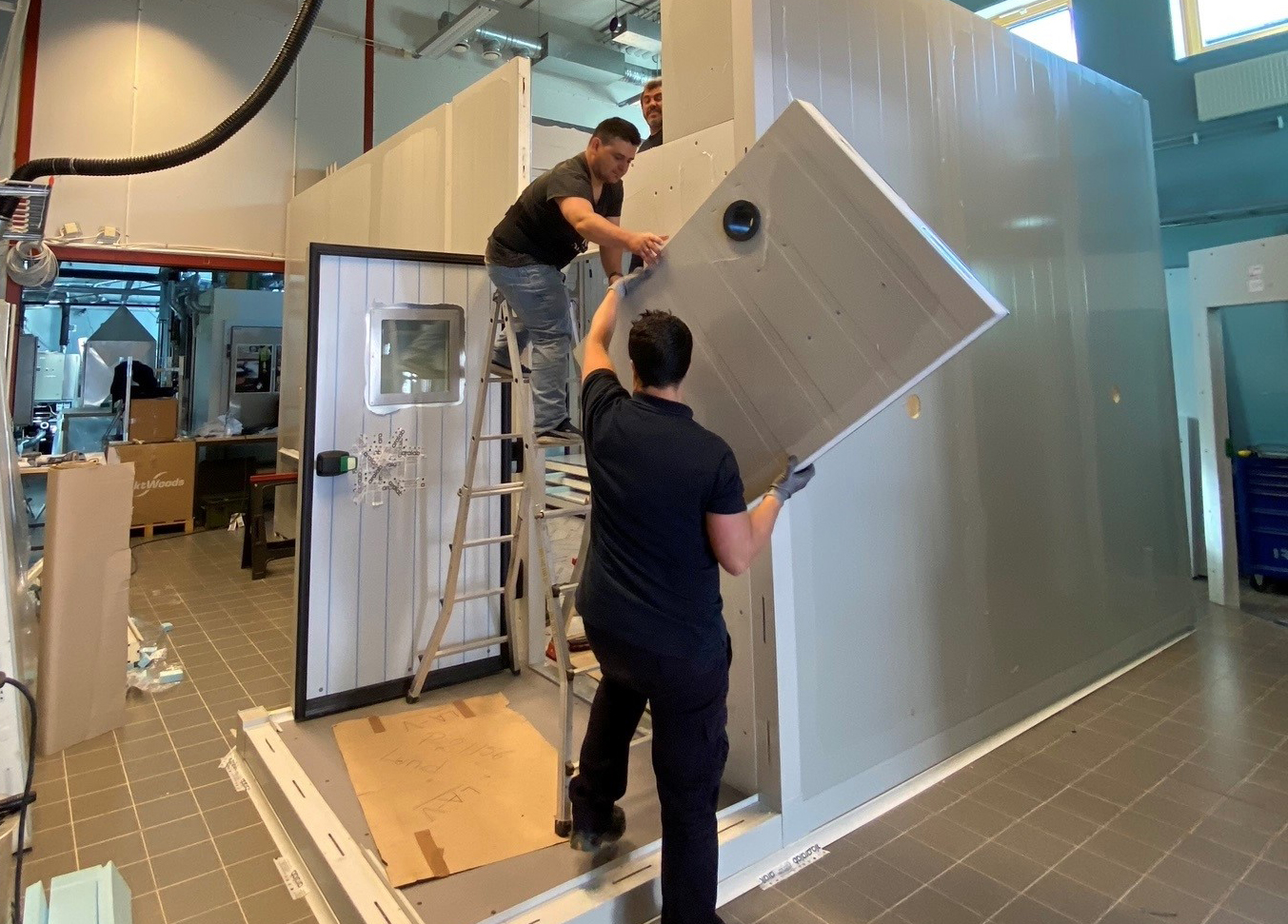Aerosol and climate laboratory
The laboratory for aerosol and climate research is a unique facility, combining techniques for measurement of aerosols and thermal climate.
How is human health affected by air pollution in different types of climate? How does viral infection spread via air in different temperatures and humidity? How does the body react to particles released by various materials and products when the climate changes?
The laboratory environment consists of three larger halls and four smaller premises, with a total area of 400 m2. In the laboratory there are, among other things, three room-sized chambers for experiments in different climate and aerosol conditions. In the chambers, it is possible to conduct studies at temperatures from -25°C to +50°C with varying air humidity and air flow. The laboratory also has vacuum and compressed air systems, sterile benches, chemical and electronics storage, and filter handling equipment. The aerosol and climate laboratory is adapted for handling microbiological substances (microbiological risk class 2).
The laboratory has a large number of instruments for advanced measurement of various properties of airborne particles. There is also access to a range of different techniques to generate aerosol particles in different sizes and from different media. The laboratory is also closely linked to the measurements that take place of atmospheric aerosol particles at the ACTRIS measuring station in Hyltemossa.
Thermal climate is an important part of the laboratory's activities. Researchers and students in thermal climate and work environment use the experimental chambers to learn how different materials and products feel and function in cold and heat. The chambers also provide an opportunity to get to know the body's reactions in different climates.
Research areas
Read more about the laboratory environment within each area.




